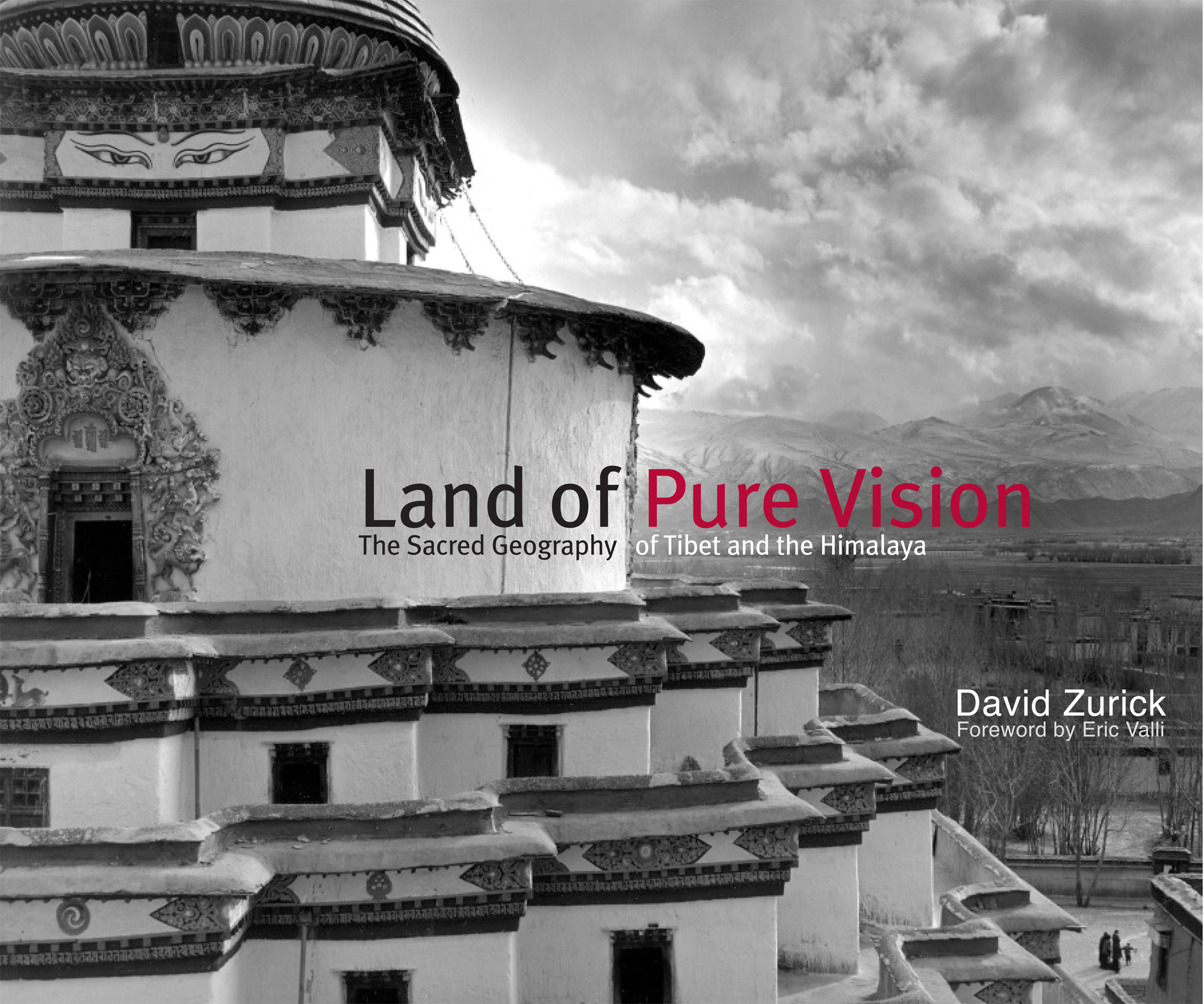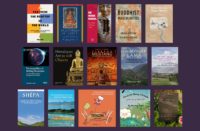
High Peaks Pure Earth presents a guest post by Jonathan Mirsky, a book review of “Land of Pure Vision: The Sacred Geography of Tibet and the Himalaya” by David Zurick, published at the end of July 2014 by the University Press of Kentucky and featured on our most recent Reading List.
“Land of Pure Vision: The Sacred Geography of Tibet and the Himalaya” is a volume of photographs of sacred sites from all over the Himalayan region and our thanks goes to David Zurick for providing High Peaks Pure Earth with some stunning photos to publish here with this review. Don’t miss the video trailer for the book, scroll down to the end of the post to watch it.
Thank you to Jonathan Mirsky for contributing this book review. Jonathan Mirsky is a journalist who went to Tibet six times between 1982 and 1988. He is a regular contributor to New York Review of Books.

“Land of Pure Vision: The Sacred Geography of Tibet and the Himalaya”
By David Zurick
Picture books usually bore me, whatever their subjects. I cannot emphasise enough, therefore, how wonderful David Zurick’s pictures are – evocative, alive, luminous, and masterful. He makes the sacred come alive and his brief, thoughtful text and explanatory notes make the pictures even more meaningful.
Beginning in 2004, Mr. Zurick, a Professor of geography at Eastern Kentucky University, lugged a heavy camera and plates – I didn’t know that anyone still used equipment like that – through Tibet proper, Tibetan parts of China, like Sichuan, and bits of Nepal and India.

Only one picture, a distant image of Mount Kailash, was snapped “ on a whim” with a digital camera. With deepening understanding, what he observed throughout his journeys were “places of a religious or spiritual character… sanctified nature; a sense of place; networks of worship; religious transmission and learning; sacred architectures.” Far from being under some dazzled tourist or hippy spell, Mr Zurick noticed, too, “the changes that overcome places with the passage of time.”
Sometimes these changes have resulted from the spread of modern urbanism; the Potala Palace in Lhasa is seen here across the sprawl of Chinese development.
Other changes have arisen, he notes, from poor care of some building, temple, or other sacred place, or because it had been looted. Still other changes resulted from deliberate Chinese destruction, including the kind I saw (Mr Zurick doesn’t show this) at Ganden, where the occupiers had razed many of the temples to the ground.

Nor do we see only structures and landscapes, which in these pictures sometimes shimmer in otherworldly light one can nearly see. There are people, too, like the juxtaposed Nepali “hipsters” in one picture and directly next to it seven young Tibetan monks, who look rather happier than the “hipsters.”
Sometimes, what Mr Zurick saw was too ghastly to picure, at least to show here. In Yunnan, for example, where the Chinese have created “Shangri-La, vaguely and wrongly reminiscent of James Hilton’s “Lost Horizon, there is “a giant prayer wheel being used as a carnival ride…”
But Mr. Zurick is right to say, and his images show how this still can be, that “Most Tibetans…still regard their homeland as a unified spiritual place, and many complete difficult journeys to affirm this cosmic cohesion… to sacred sites scattered across one of the most forbidding terrain on Earth.” He experienced this, and his profound pictures help us, so far away, to sense it, too.
Buy “Land of Pure Vision” by David Zurick on Amazon here: http://amzn.to/1rHOmco





Follow Us!